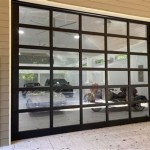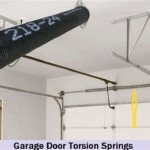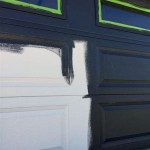Sears Garage Door Opener Problems: Diagnosis and Solutions
Sears garage door openers, often marketed under the Craftsman brand, have been a mainstay in American homes for decades. Known for their affordability and general reliability, these openers, like any mechanical device, can experience problems over time. Understanding common issues and potential solutions is crucial for homeowners to maintain the functionality and security of their garage.
Troubleshooting a garage door opener problem typically begins with a systematic approach. This involves observing the specific symptoms, identifying potential causes, and then implementing appropriate remedies. Safety should always be the paramount concern when working with electrical and mechanical equipment. Disconnecting the power to the opener is a crucial first step before attempting any repairs.
Common Mechanical Issues
Mechanical problems are a frequent cause of garage door opener malfunctions. These issues can range from simple lubrication needs to more complex repairs involving worn-out components.
One common mechanical problem is a noisy garage door opener. This noise can manifest as grinding, squealing, or rattling sounds. Often, the source of the noise is a lack of lubrication on the moving parts. Applying a silicone-based lubricant to the chain or screw drive, rollers, hinges, and other moving parts can significantly reduce noise. It’s important to use a lubricant specifically designed for garage door openers, as other lubricants may attract dirt and debris, making the problem worse over time.
Another potential source of noise and mechanical issues is worn-out rollers. Garage door rollers are subjected to constant use and can eventually become worn, cracked, or damaged. Replacing worn rollers can not only reduce noise but also improve the overall smoothness of the door's operation. When replacing rollers, it's recommended to replace all of them at once to ensure consistent performance.
A more serious mechanical problem is a broken spring. Garage door springs are responsible for counterbalancing the weight of the door, making it easier to open and close. If a spring breaks, the door will become extremely heavy and difficult to lift, and the opener may struggle to operate correctly or even fail completely. Replacing garage door springs is a dangerous task and should only be performed by a qualified professional. The springs are under high tension and can cause serious injury if handled improperly.
The garage door itself can also contribute to mechanical problems. If the door is unbalanced, obstructed, or damaged, it can put undue stress on the opener mechanism. Inspecting the door for dents, bends, or other damage is important. Ensuring that the door tracks are properly aligned and free of obstructions is also crucial. Any issues with the door itself should be addressed before attempting to repair the opener.
Finally, the drive mechanism of the opener, whether it is a chain, screw, or belt, can also experience wear and tear. Chains can stretch or become loose, screws can wear down, and belts can fray or break. Regularly inspecting the drive mechanism and making necessary adjustments or replacements is essential for maintaining optimal performance.
Electrical Problems and Sensor Malfunctions
Electrical issues and sensor malfunctions can also lead to garage door opener problems. These issues can be more difficult to diagnose than mechanical problems, as they often involve troubleshooting wiring, circuit boards, and electronic components.
One of the most common electrical problems is a dead or weak remote control battery. Replacing the batteries in the remote control is the first step in troubleshooting remote control issues. If the remote still doesn't work after replacing the batteries, there may be a problem with the remote itself or the receiver in the garage door opener.
Another potential issue is a problem with the wiring between the garage door opener and the wall-mounted control panel. Inspecting the wiring for loose connections, damage, or corrosion is important. Reconnecting any loose wires or replacing damaged wiring can often resolve the issue.
Safety sensors, located near the bottom of the garage door opening, are designed to prevent the door from closing if an obstruction is detected. Malfunctioning safety sensors are a common cause of garage door opener problems. The sensors work by emitting an infrared beam across the door opening. If the beam is interrupted, the door will not close, or it may reverse direction if it is already closing.
If the safety sensors are misaligned, dirty, or damaged, they may not function correctly. Aligning the sensors, cleaning the lenses with a soft cloth, and ensuring that there are no obstructions in the path of the infrared beam can often resolve safety sensor problems. If the sensors are damaged, they may need to be replaced.
The circuit board within the garage door opener controls the various functions of the opener. If the circuit board is damaged or malfunctioning, it can cause a variety of problems, including the door not opening or closing, the lights not working, or the remote control not working. Replacing the circuit board is often necessary to resolve these issues. This is generally done by a qualified technician, especially for older or complex models.
Power surges can also damage the electrical components of the garage door opener. Installing a surge protector can help protect the opener from power surges. If the opener has already been damaged by a power surge, it may need to be repaired or replaced.
Limit Switch and Programming Issues
Limit switches and programming issues can also cause garage door opener problems. These issues relate to the control of the door's travel and the settings that govern its operation.
Limit switches are used to set the upper and lower limits of the garage door's travel. These switches tell the opener when to stop the door at the fully open and fully closed positions. If the limit switches are not properly adjusted, the door may not open or close completely, or it may reverse direction prematurely.
Adjusting the limit switches typically involves turning adjustment screws located on the garage door opener unit. The specific procedure for adjusting the limit switches will vary depending on the model of the opener. Consulting the owner's manual is essential for proper adjustment. Making small adjustments and testing the door's operation after each adjustment is recommended.
Garage door openers are often equipped with a programming feature that allows users to program remote controls, keypads, and other accessories. If the programming is lost or corrupted, the remote controls and other accessories may not work correctly.
Reprogramming the remote controls and other accessories typically involves pressing a "learn" button on the garage door opener unit and then following the instructions in the owner's manual. The process for reprogramming can vary depending on the model of the opener. It's crucial that the garage door opener model and the remote controls are compatible for programming to be successful.
Sometimes, the garage door opener can become "stuck" or unresponsive due to a software glitch. In this case, unplugging the opener for a few minutes and then plugging it back in can sometimes reset the system and resolve the problem. This is similar to rebooting a computer.
Interference from other electronic devices can also interfere with the programming of the garage door opener. Radio frequency (RF) interference from other devices, such as wireless routers or cordless phones, can disrupt the communication between the remote control and the opener. Moving the interfering device or changing the channel on the wireless router can sometimes resolve this issue.
In summary, diagnosing and resolving Sears garage door opener problems requires a systematic approach. By understanding the common issues associated with mechanical components, electrical systems, and programming settings, homeowners can often troubleshoot and repair minor problems themselves. However, it's essential to prioritize safety and to consult a qualified professional for complex or potentially dangerous repairs, especially those involving garage door springs or electrical wiring.
Sears Garage Door Opener Repair Help Learn How To Fix It Yourself

Garage Door Won T Open Or Close Force Adjustments

Sears Garage Door Opener Gear Fixed 630 271 9343

Craftsman Garage Door Opener Repair

How To Fix A Garage Door Opener That Won T Open The Remotes Don Work

How To Fix A Garage Door Opener That Won T Close The Lights Blink 10 Times

Why Won T My Garage Door Opener Fully Open Or Close The

Garage Door Opener Remotes Won T Work Tips And Tricks

Craftsman 1 2hp Garage Door Opener Fix

A Guide To Troubleshooting Common Garage Door Problems Phoenician Doors Inc
Related Posts








